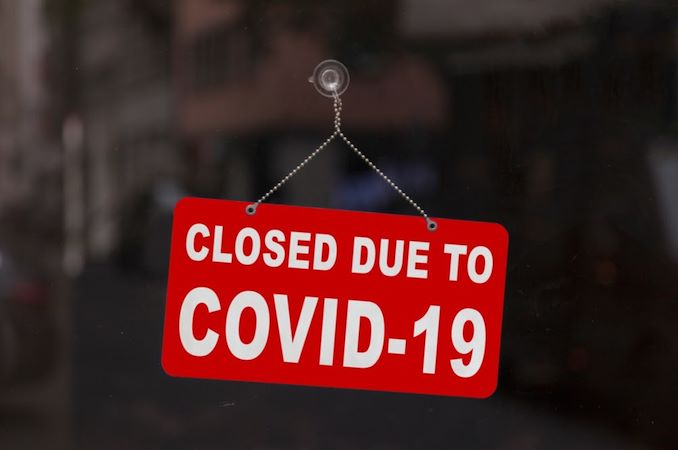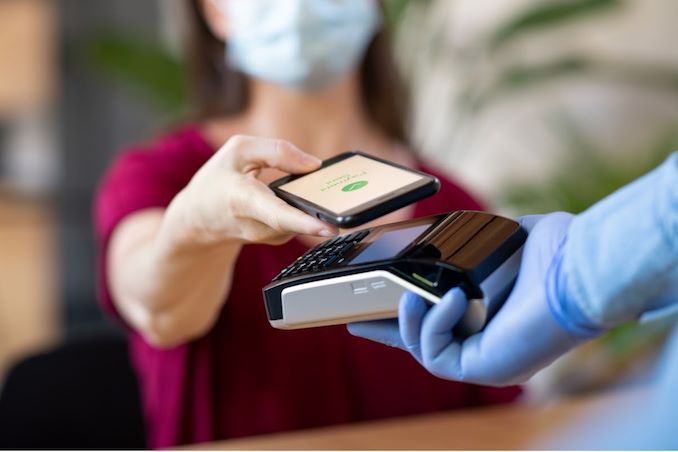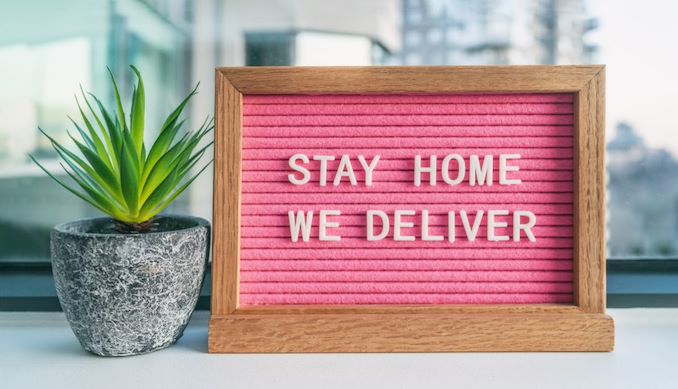Sponsored Post: What COVID-19 Means for the Future of Retail
by Sponsored Post on March 15, 2021 11:00 AM EST- Posted in
- Sponsored Post

With the current state of the retail sector, pessimism is remarkably easy. The novel coronavirus was borderline catastrophic for many retailers. Even now, over a year into the pandemic, retailers continue to struggle.
Empty shopping malls, their storefronts dark and empty. Department store shelves devoid of inventory. Industry leaders announcing bankruptcy and frantically scrambling to pull themselves above water.
COVID-19 has irrevocably changed the face of retail. But not all of the changes are as unprecedented or as unexpected as you might think. And it's critical that you understand the difference between the existing trends and the emerging ones.
When the Writing on the Wall Springs Violently to Life
COVID-19 was, notes Footwear News, a baptism by fire, one which many did not survive. At the same time, it also accelerated shifts the industry was already undergoing. The problem wasn't that the pandemic was forcing retailers to do something unprecedented or adjust to a market no one could have foreseen.
The problem was that it forced scores of businesses to evolve well before they were prepared to. In retail especially, much of COVID-19's impact was tied to the fact that it supercharged already-ongoing trends. Taking an objective look at the industry, we're able to determine a few things:
- eCommerce was already primed to overtake brick-and-mortar retail. From 2017-2019, the eCommerce space saw an average sales increase of 24 percent year-over-year. Although COVID-19 almost doubled this at 44 percent, a world defined by online shopping was already inevitable.
- Comfort and convenience were already a huge priority. From streaming services like Netflix to meal delivery apps like GrubHub, we live in a world defined by near-instant gratification. Even before we experienced the full brunt of the pandemic, 72 percent of consumers were likelier to choose a retailer based on convenience.
- Effective branding was always important. Consumers now care more deeply about authenticity and human experiences than ever. They want brands to treat them like a human being and provide an experience rather than a product. But this is hardly news — it also held true as far back as 2017.
- Brick-and-mortar stores were already dying off. In 2019, for instance, retail store closures increased by 59 percent over the previous year. Many of the stores that failed during the pandemic likely would not have survived regardless.
- Big box was already getting bigger. Retailers such as Target and Walmart saw a surge in sales over the course of the pandemic. Specialty retailers such as fashion brands, on the other hand, reported record-setting declines. Yet the gap between successful and declining retail outlets was already there before COVID, and many specialty retailers were already struggling.
- Payment options were already evolving. Contactless payment, mobile payment, and online payment were not created as a result of COVID. These innovations existed for years before the pandemic, and simply gained increased market penetration.
The need for brick-and-mortar retailers to update their payment systems and branch out into eCommerce has been there for years. The problem is that, perhaps owing to the complexity of making such a transition, many retailers simply didn't bother. Now, with the pressures of the pandemic still hanging over their heads, it seems as though it's too late — though in actuality, it's simply a matter of choosing the right platform to help with that transition.
Let’s discuss that more in a moment, though. For now, let's move on to examine the changes and trends the pandemic has inspired. They're just as important as those that already existed, in order to see a complete picture of the landscape.
The Emergence of a New World of Retail
In the early days of the pandemic, most people saw it as temporary. A passing inconvenience that would disappear the same way as other outbreaks before it. It might impact the bottom line of a few stores, but for the most part, everyone would weather the storm.
Today, the pandemic has killed nearly 2.5 million people, and left countless more struggling with a debilitating recovery process. Lockdowns and quarantines continue in earnest. Even as world governments begin to distribute vaccines, there's the sense that the world is irrevocably changed.
That there's no going back to how things were. This is especially true in retail. Between market conditions and changing consumer behavior, the industry was impacted in several significant ways:
- An even greater gulf between rich and poor. While lower and middle class Americans struggled immensely during COVID, the wealthy continued to spend, squirreling away money as many people lost their jobs. Some economists have warned that post-pandemic, the rich are only going to get richer, while everyone else falls deeper into debt.
- No touching. Driven by concerns about the virus, many retailers — grocery outlets especially — have begun experimenting with smartphone apps, lockers for online purchases, and other innovations designed to reduce contact with shared surfaces. Although sanitization and social distancing measures will decline post-pandemic, the technology will remain.
- Ethics and responsibility. In 2020, widespread protests brought social issues to the forefront of everyone's minds, and multiple disasters put a laser-focus on climate change. As a result, there is mounting evidence that consumer attitudes have evolved to focus more on ethics and social responsibility.
- Consumer shopping habits have changed. The pandemic changed not only what people care about, but what they buy. Priorities have shifted, and are interested in products more focused on practicality and personal health.
Competing with big-box retailers in this kind of atmosphere won't be easy — but again, building upon the right technological foundation is the most important step.
How Can Your Retail Business Adapt to a Post-pandemic World?
As you've doubtless surmised, COVID-19 had an enormous impact on the retail sector. The most any of us can do is adapt, and hope that prepares us for what comes next.
Here's what you can do in the immediate future:
- Update your point of sale system. First and foremost, you need to offer more flexible payment options. The standard card, chip, or cash offerings simply aren't going to cut it anymore.
- Optimize your inventory management. How easily are you able to order new inventory? Create product listings? Update and monitor stock? If your answer wasn't 'seamlessly,' then there's a problem.
- Focus on convenience. Where possible, you need to offer both curbside pickup and delivery. The idea here is that your customers should be able to make their purchases in whatever fashion is most convenient to them.
- Take things online. If you don't have a web presence or an online storefront, you need one. Simple as that.
- Change your marketing tactics. Your brand and its products are no longer important. The customers you're selling them to are what matters now. Focus on understanding them, knowing their needs, and connecting with them on a genuine, human level.
- Brainstorm a subscription program. With the current market volatility, you can't always count on sales revenue alone. Instead, subscription services such as exclusive discounts, gift boxes, and special, subscriber-only sales.
- Secure customer loyalty. Initiatives such as points cards and rewards have a proven effect on customer loyalty. Along with subscription services, this will help you overcome your greatest obstacle: customer retention.
It's an overwhelming list at first glance, isn't it? Fortunately, ticking off every item is easier than you'd think. It all starts with purchasing the right POS system — like Lightspeed.
An advanced, intuitive POS with integrated eCommerce, contactless payments, omnichannel loyalty programs, and seamless inventory management, Lightspeed is exactly the foundation you need to adapt to the pandemic. You'll be able to do more than survive, though. Because Lightspeed evolves along with your needs, it can help you thrive in the world after COVID-19, as well.
COVID-19 didn't just change retail. It's changed the world. Even when the pandemic is over, nothing will ever be the same again.
But ultimately, that might not be a bad thing.













2 Comments
View All Comments
Peskarik - Monday, March 15, 2021 - link
c19 did not change the world, the governments did, and yes, we are not "going back to normal"Yojimbo - Tuesday, March 16, 2021 - link
Yeah, too much people say "because of the pandemic" or "because of covid" when they should say "because of the lockdowns".